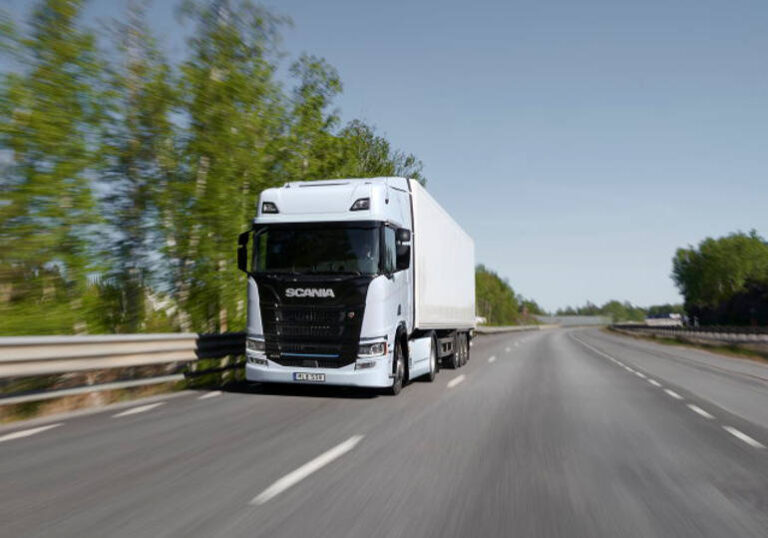The momentum of interest in electric trucks has been accelerating for the past three years, however on the ground the results are far from impressive. For example, Iveco delivered just 72 electric trucks in Italy last year – less than half a percent of a dynamic and emissions conscious market.
The biggest obstacle is initial cost, however the next one on the list is the real show-stopper. Consider our case study below, which is based on an actual scenario. It’s a metropolitan bus company, but the dynamics are the same.
Our understanding is that regular charging of two or more heavy-duty trucks at scheduled times will usually require a transformer installation. Some providers might help smooth the cost, but a big expense for the customer is inevitable.
A spokesperson for Western Australia’s Western Power, which operates the South-West Interconnected System, confirmed a key consideration and potential cost associated with any fleet conversion was having the right electricity connection and supply arrangements in place.
“These include determining the type and number of chargers required, along with the total kW, and the likely impact on existing supply arrangements,” he said.
He added that an electrical consultant will be required to assess what’s required to charge trucks at their site, including other civil works and infrastructure.
The reality is that for a large fleet of big-battery vehicles with various states of charge on return to depot, MWs of power will be the base line, and this will impact the network itself. Some areas will handle it within existing infrastructure, but in most areas it would require network upgrades, which would also involve extra cost on the customer.
There is clearly more to an electric fleet than plugging all the trucks in overnight and heading off to work with confidence that you have the advertised maximum range in the batteries.
Emissions enthusiasm aside, we have a long way to go before electric trucks – which are the future – are outselling modern diesels. Transport operators will need to make major operational changes to extract the best from an electric fleet. Public charging facilities won’t cut it. Can you imagine multiple trucks, each up to 15-metres long clustered at a charging point while each takes a 45-minute fast-charge electron hit? Not happening. Depot based charging will be a necessity.
Other changes will need government action, and front axle limits will be another factor. One major brand’s electric truck range uses multiple battery packs that each weigh 500kgs. Six of them are installed on the company’s prime mover offering a range of “up to 300kms.” At the standard front axle limit of six or 6.5-tonnes, the truck is likely to be overweight, and illegal. Trials of an increased front axle limit for electric trucks are now under way.
Planning your electric venture will be more than a whole of life cost analysis. Other variables like, energy consumption, load capacity, operating hours and potential charging slots need critical planning.
Australian electric truck pioneer SEA Electric offers an 18-27t dual axle rigid with a 220kWh battery and up to 470hp. Glen Walker, Asia Pacific Vice-President told us that complex charging infrastructure software will need to juggle which truck in a fleet needs the most charge, which needs it soonest, and when are the cheapest times to charge within the window, given market pricing fluctuations. And overnight – no solar.
The SEA Electric rigid needs 22kW of 3-phase power for AC charging, or 88kW of (converted) 3-phase power for DC charging. That’s nearly a megawatt of 3-phase power for a fleet of 10 charging at the same time. Better talk to your energy provider before signing up.
There’s no question transport’s future lies in electric motive power. How much is pure battery, and how much includes diesel or hydrogen range extender systems depends, as always, on the application.
Finally – payload. An electric truck driveline is a lot lighter than a diesel engine and transmission, but it takes a 5,000kg (5-tonne) battery to match the energy density of 200kgs (200l) of diesel. At today’s technology, your electric truck could be up to 30% heavier than your diesel truck when specced for the same task. Plus, your diesel truck gets lighter, and therefore more fuel efficient with distance. But there are too many other variables to cover in this story.
Suffice to say, fleets of battery electric trucks are on their way and will eventually be the best transport choice. However, as the Gladiator’s new best mate once famously said – “But not yet.”
Case Study
“I’m a transport company operating a fleet of 10 trucks. Most are dual axle rigids and I deliver to metropolitan and near-regional centres. They’re all late technology diesels, but the life cycle is nearly up and I’m keen on ‘greening’ the fleet with electrics.
“The capital cost is quite a bit more, but I’m ok with the projected cross-over point vs new diesels. I reckon around five years to be conservative (the truck company reckons three). Finance is all set; ready to roll. I’ll call the dealer.”
Some days later – “I didn’t expect that – a truck company rep that tells me I can’t have ten trucks! I can only have two. Why? Because I need to charge the fleet between 11pm and 5am, but the existing power supply to my premises isn’t up to it. I need to talk to my energy provider, and that won’t be cheap. Also, I’m using rented premises and it’s all hardstand. Getting the power to the charging points will be even more expensive, and I’ll have to write that cost off if I move.
Looks like it’s two electric – and eight diesel . . .”






